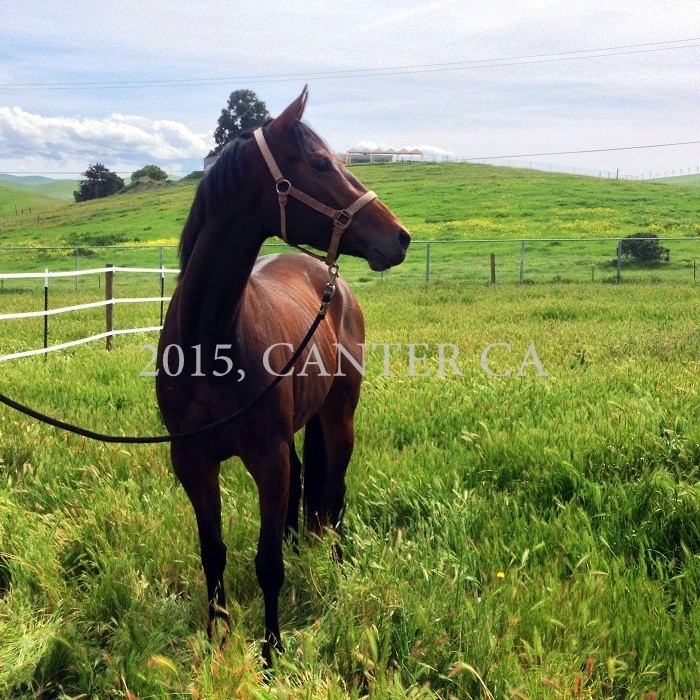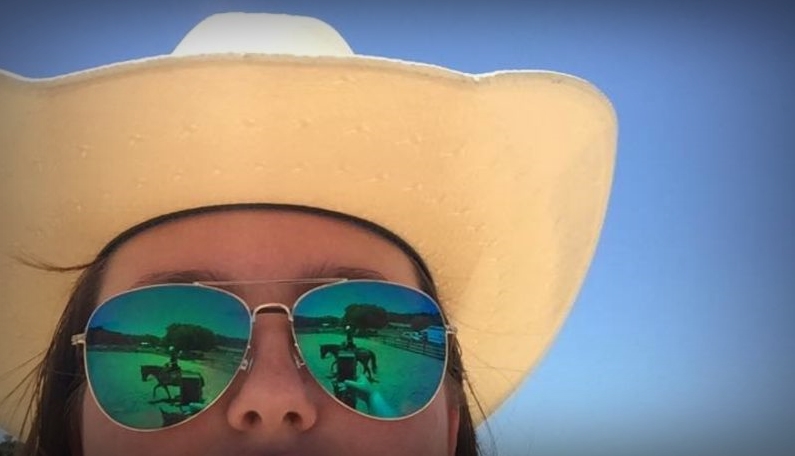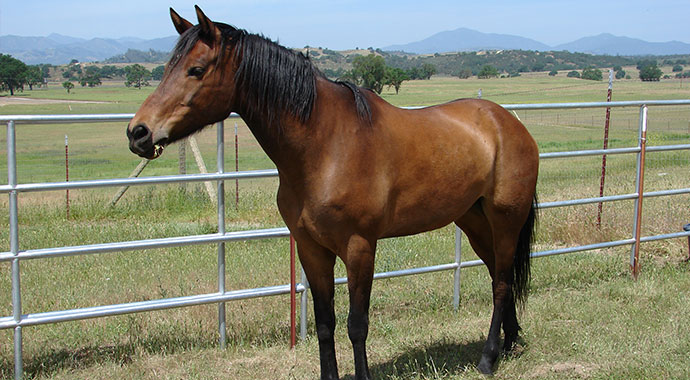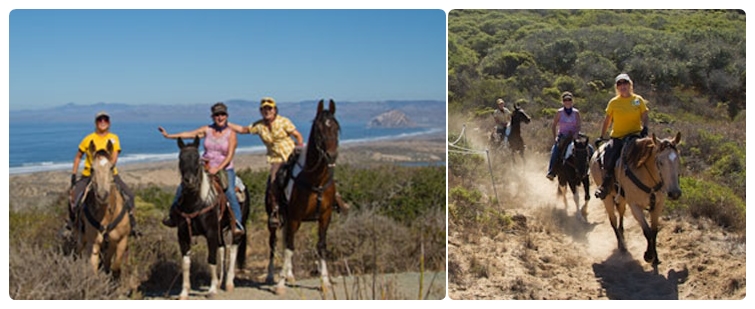“All long lazy mornings,
In pastures of green,
The sun on your withers,
The wind in your mane,
Could never prepare you
For what lies ahead,
The run for the roses so red”
. . . thus reads a stanza from the 1981 song Run for the Roses written and sung by Dan Fogelberg summarizing the life a Thoroughbred foal destined for the track.
But what is that little foal’s fate if he doesn’t run, or when he is through giving his heart and body for an attempt at those “roses”? The answer is a bit chilling, and known all too well by CANTER USA , an organization that has successfully placed over 20,000 Off the Track Thoroughbreds (better known as OTTB’s) with new owners who have re-purposed these sleek and athletic animals.
It is estimated that thousands of Thoroughbreds in the United States are in need of homes each year, usually when they can no longer earn their keep on the track. The percentage of potential “race horses” who actually live completely successful lives on and around the track, or at race horse breeding facilities, is minuscule in comparison to how many are foaled each year. A large percentage of the young – usually under six years old – and typically healthy Thoroughbreds who can no longer “earn their keep” are shipped to slaughter houses in Mexico and Canada. Just because the US officially banned the slaughter of horses in 2007, does not mean that American bred and born Thoroughbreds do not find their way to this sad end regardless. This is where CANTER steps in…
CANTER: The Communication Alliance to Network Thoroughbred Ex-Racehorses
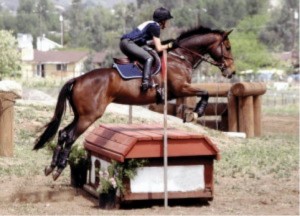
SLO Horse News caught up with Alison Dacher, Executive Director of CANTER California in Palo Alto, CA. Several OTTB horses have been adopted from or into San Luis Obispo County through CANTER California. Alison shared with us her own OTTB ownership experience. “I have had two. My first inspired me to start CANTER, and my most recent came from the CANTER program. My first came from a non-profit, and in usual young horse fashion he liked to test me. My current horse, “Haiku”, has had a myriad of self-inflicted injuries due to a complete lack of self preservation. She is a gorgeous girl, very athletic and well put together, but has some anxiety issues and lots of opinions. I am fairly positive if I didn’t keep her she would have been returned to the program a few times. However, after many years of struggling with chronic ulcers and gastritis I think she is finally pain free and a much happier horse. I would call that a success! Hopefully we can keep her comfortable and get her in the show arena soon.”
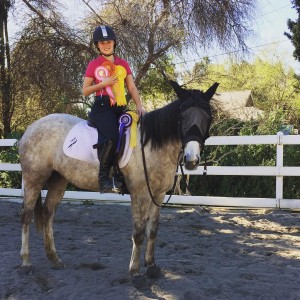
CANTER California started using The Equine Center in San Luis Obispo as a rehab and retraining facility around 2009. The last time CANTER had a horse at this facility was about six months ago. Since CANTER California is based out of the Bay Area, they have recently consolidated rehab/retraining barns from 11 throughout California to only a few, with most in the Bay Area. The majority of people providing services for the horses CANTER rehabs or retrains do so with about a 10% discount in fees. CANTER California is extremely grateful for the generosity of Dr. Diane Isbell, of Livermore, who donates all of her services to see these horses rehabilitated.
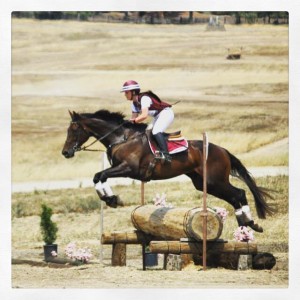
A recent placement of a horse in SLO County through CANTER was an OTTB named “Stony Creek”. Alison tells us his story. “Stony Creek was retired from racing with a minor injury, and he was accepted in the CARMA (see carma4horses.org) triage program. As a grantee of CARMA, we routinely take horses from their program to handle the remaining rehab, then retrain and re-home them. Stony was boarded at the Equine Center, where he completed rehab and was retrained by Lauren Henry, who fell in love with him and ended up purchasing him. They compete in 3 day Eventing, and are in the ribbons every time out.”
Adopt Your Own Off the Track Thoroughbred
OTTB’s make great prospects for experienced riders. The adoption process starts with a prospective owner filling out an application on the CANTER USA website. Once the application has been processed (references will be checked and CANTER tries to match rider and horse temperaments), the client can begin to investigate available options. Completing the application process first allows the adoption process to proceed, and second, eliminates the horse from being purchased by someone already approved for that horse. “In eight years we (Canter California) have only had four returns out of over 80 horses. Two from divorce, one due to pregnancy and one for injury from shipping to a new home,” explained Alison.
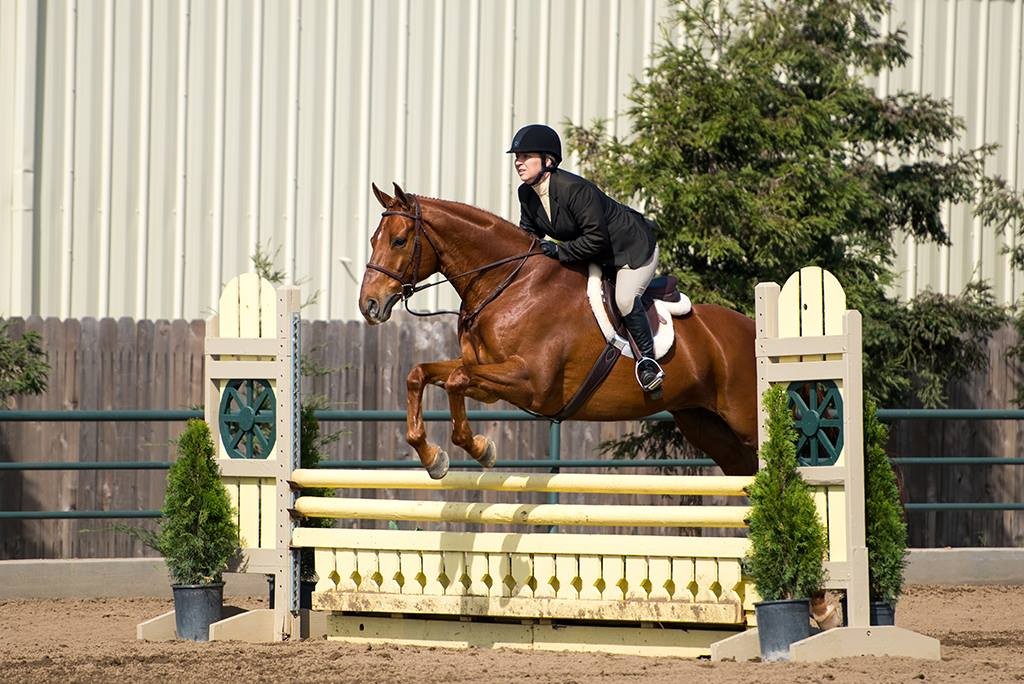
Once the application has been processed and approved, prospects can be seriously looked at. The best source is the CANTER website under Find a Horse. Here the adopter will see two types if listings: one of CANTER owned horses and one that lists horses for the track trainers. Alison explains the role CANTER California plays, “We have a small program, so we only take about 20 horses a year. We take horses that are suitable as riding horses. We are not a retirement organization so we do screen for injuries that are better suitable for retirement. You would be surprised at the horses we have been able to rehab!”
Once a match is approved, the Adoption fee is paid. The adopter must agree to the “Conditional Lifetime Bill of Sale” and arrange for transportation, before excitedly waiting for their new arrival.
Alison reminds us again that, “Most OTTB’s re-homed through our program are not for beginners. Most have only 3-6 months of riding training, and that is not enough for a beginner rider. Most of our homes are NOT first-time horse owners, and most have at least intermediate riding and horsemanship skills. There are exceptions to this, and every once in a while there is a quiet, gentle horse that is suitable for a first-time owner. In these situations we require owners to work with a trainer. If you can find the right OTTB for you, you get a lot more bang-for-your-buck. TB’s tend to sell for fractions of what a Warmblood costs, and they are versatile athletes with spectacular work ethics. They want to work.”
CANTER USA has a great track record when it comes to placing horses. Alison went on to explain,
“All the horses in our program have gone on to new homes. We recently had a horse for three years but he finally found a great home. We have a 100% placement rate. We are not a retirement facility, so if we end up with a horse that needs a retirement home we work with other non-profits to find space.”
As Run for the Roses continues,
“And it’s run for the roses
As fast as you can
Your fate is delivered
Your moment’s at hand
It’s the chance of a lifetime
In a lifetime of chance
And it’s high time you joined
In the dance
It’s high time you joined
In the dance –“
Is it time for you to join in the dance? CANTER.ORG just might have the perfect equine partner for you.

